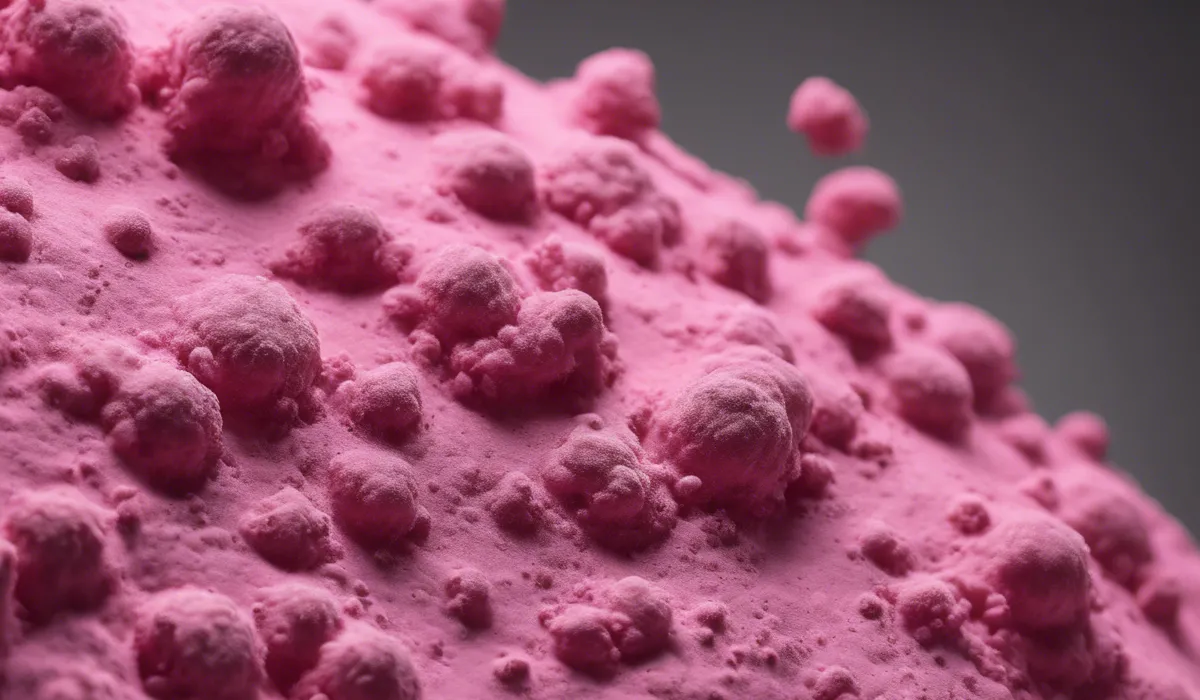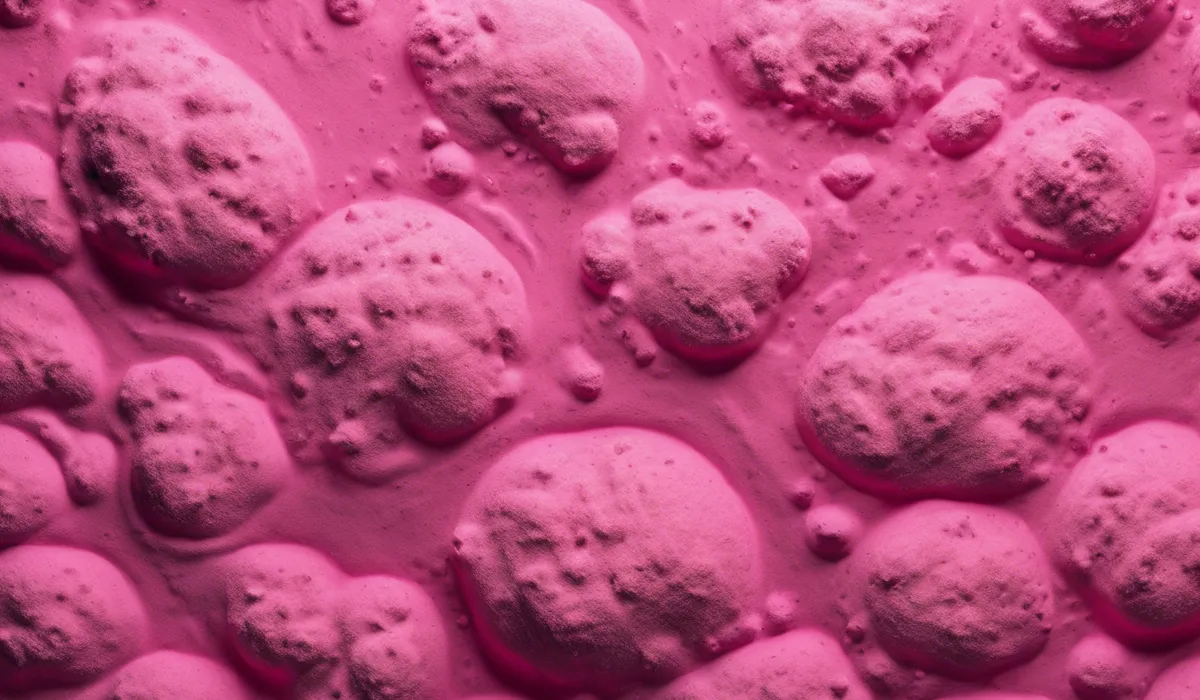Pink mold, often a bacteria called Serratia marcescens, can be harmful. It may cause infections, especially in those with weakened immune systems. While not as hazardous as black mold, it should still be removed promptly and with care to avoid health risks.
Understanding Pink Mold

Definition of Pink Mold
Pink mold is a common name for microbial growth that appears pinkish in color. It is often mistaken for a fungus but in many cases, it is actually a type of bacteria called Serratia marcescens.
This bacterium can form a slimy layer on damp surfaces, leading many to identify it as a mold.
Common Types of Pink Mold
While Serratia marcescens is the most recognized pink mold, there are also fungi that can appear pink and are sometimes grouped under this term.
Two common types of fungi that may exhibit a pink hue include Aureobasidium and Fusarium.
These organisms are different from the bacteria but can also grow in damp environments and pose similar risks.
Typical Environments Where Pink Mold Thrives
Pink mold flourishes in moist, warm environments. Bathrooms, kitchens, and window sills are common household areas where pink mold can be found.
It develops on soap residues, shower curtains, tiles, and even in pet bowls where water is allowed to sit. Outdoors, pink mold might grow on damp wood, soil, and plants.
Differences Between Pink Mold and Other Types of Mold
Pink mold differs from other molds in color and sometimes in composition, being bacterial rather than fungal.
Unlike black mold, which is notoriously toxic, pink mold is not often considered as hazardous.
However, it is still unwanted in homes because it can lead to health issues and indicates excess moisture.
Health Risks Associated with Pink Mold

Potential Health Effects of Exposure to Pink Mold
Exposure to pink mold, especially the bacteria Serratia marcescens, can lead to infections.
It can cause respiratory problems, urinary tract infections, and even wound infections if the bacteria enter the body through cuts or scrapes.
The risk is higher if there is prolonged exposure or direct contact with the mold.
Vulnerable Populations and Heightened Risks
Individuals with weakened immune systems, such as the elderly, infants, and those with chronic illnesses, are more susceptible to the effects of pink mold.
Hospital patients can be particularly vulnerable, as the bacteria can spread in healthcare settings and lead to serious infections.
Symptoms of Exposure to Pink Mold
Some common symptoms of pink mold exposure include coughing, sneezing, skin rashes, and eye irritation.
It is important to note that symptoms may vary depending on the individual’s health and the duration of exposure.
Long-Term Health Implications
While short-term exposure to pink mold may only cause mild symptoms, long-term exposure can lead to more severe health issues.
Chronic respiratory problems and ongoing allergic reactions are potential risks. Continuous surveillance and prompt action are crucial for those who have been exposed to pink mold over an extended period.
Prevention and Remediation of Pink Mold

Tips for Preventing Pink Mold Growth in Homes
Preventing pink mold starts with controlling moisture in your home. Using dehumidifiers, fixing leaks, and ensuring proper ventilation can help keep areas dry and less hospitable to mold growth.
Regularly cleaning and drying shower curtains, tiles, and other wet surfaces will also discourage mold from developing.
Cleaning and Removal Strategies for Pink Mold
For small areas of pink mold, a mixture of water and bleach or vinegar can be effective for cleaning.
It is essential to wear gloves and a mask while cleaning to prevent inhaling spores or getting the bacteria on your skin.
Always scrub gently to avoid releasing mold into the air and rinse the area thoroughly after cleaning.
When to Call a Professional for Mold Removal?
If you discover a large area of pink mold or if it keeps returning after cleaning, it may be time to call a professional.
Mold remediation experts can safely and effectively remove the mold and identify the source of moisture that is allowing it to thrive.
Maintaining a Mold-Resistant Environment
After removing pink mold, keeping your home dry is key to preventing its return. Regular maintenance, such as checking for leaks, using bathroom fans, and drying wet areas, can help maintain a mold-resistant environment.
Additionally, using mold-resistant paint and materials in high-moisture areas can provide extra protection.
FAQs About Pink Mold Dangers
Is pink mold in the bathroom dangerous to humans?
Pink mold, which is often the bacteria Serratia marcescens, can be harmful to humans, particularly to those with weakened immune systems, as it may cause infections.
How does pink mold compare to black mold in terms of health risks?
While pink mold is not considered as hazardous as black mold, which can produce harmful mycotoxins, it still poses health risks and should be removed promptly.
Can pink mold cause respiratory problems?
In some cases, pink mold can lead to respiratory issues, particularly in individuals with existing respiratory conditions or compromised immune systems.
Should I be worried about pink mold in my home?
While pink mold is less dangerous than black mold, it is still a concern and should be addressed to prevent potential health risks, especially in vulnerable individuals.
What should I do if I find pink mold in my house?
If you find pink mold in your house, it is advisable to clean it up promptly and with care, using appropriate cleaning methods to minimize exposure and prevent health risks.
Final Thoughts
Pink mold, typically the bacterium Serratia marcescens, poses health risks. While it is not as dangerous as black mold, it can still lead to infections, particularly in individuals with compromised immune systems.
Prompt and careful removal is essential to mitigate potential hazards associated with this bacterial growth.
